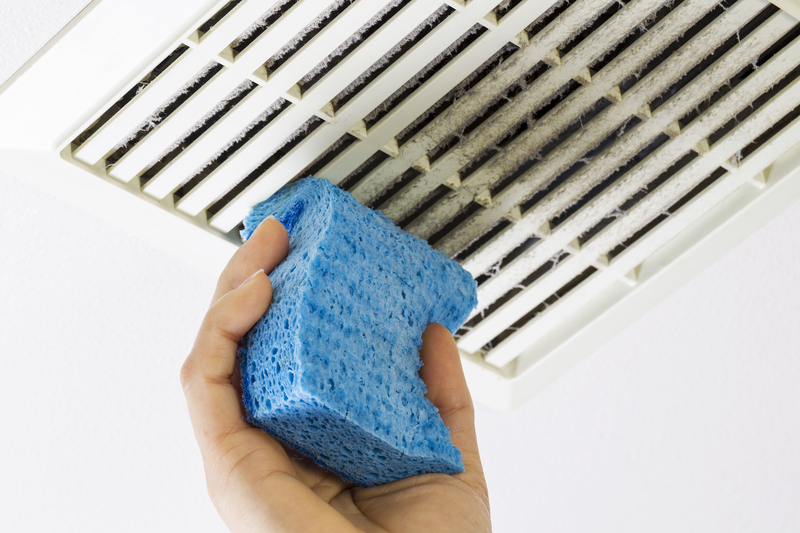Discover How to Achieve a Damp Smell-Free Home
Posted on 20/06/2025
Are you tired of that persistent damp smell invading your living space? You're not alone. Many homeowners struggle to eradicate musty odors, especially in humid climates or older properties. Discover how to achieve a damp smell-free home with our comprehensive guide--packed with actionable tips, expert advice, and long-term solutions.
Understanding the Source of Damp Odors in Your Home
A musty smell, often likened to that of moldy books or wet socks, is much more than just unpleasant--it can also indicate deeper issues within your property. Dampness is commonly caused by excess moisture, which can lead to the growth of mildew and mold, exacerbate allergies, and even damage furniture and building materials.
- Leaking pipes
- Poor ventilation
- Water ingress from outside
- Condensation buildup
- Wet basements or crawl spaces
Identifying the source of the damp scent is crucial for implementing the right solution. Regular home inspections can help you spot issues early before they become bigger problems.

Common Causes Behind Damp and Musty Household Smells
1. Poor Air Circulation
A home that's shut tight with little airflow quickly becomes a breeding ground for musty odors. Stale air allows humidity levels to rise and condensation forms, especially on cold surfaces like walls and windows.
2. Plumbing Leaks and Moisture Intrusion
Even a slow-dripping pipe under the sink or behind the walls can foster persistent dampness. Unnoticed leaks create the perfect environment for fungal growth.
3. Rising Damp
Older homes are often susceptible to moisture rising from the ground into the walls and floors, especially if there's no damp-proof membrane. This results in a mildewy aroma that lingers.
4. Faulty Weatherproofing
Cracked masonry, missing roof tiles, and unsealed windows and doors all allow rainwater to seep in, raising humidity inside and promoting smelly damp conditions.
How to Spot Hidden Damp and Its Effects
Sometimes, the source of dampness is not immediately visible. Watch for these tell-tale signs:
- Peeling paint or wallpaper
- Dark, patchy stains on walls or ceilings
- White, powdery deposits (efflorescence)
- Condensation on windows
- Warped wood or bubbling flooring
If left untreated, persistent moisture and the resulting damp odors can cause:
- Damage to developing surfaces and building materials
- Growth of mold spores
- Increased risk of respiratory health issues
- Decreased property value
Step-by-Step Strategies to Eliminate Damp Smells
Step 1: Diagnose and Fix Dampness Causes
Before trying to mask the smell, you must address the root issue. Here's how:
- Inspect plumbing for leaks in kitchens, bathrooms, and utility areas
- Check outside walls and basement for signs of water entry
- Repair roof damage, cracked gutters, and downpipes
- Seal window frames and doors to prevent drafts or rain intrusion
- Consider professional assessment for rising damp or extensive damage
Step 2: Properly Ventilate Your Home
Ventilation is critical for a damp-free house. Open windows regularly, especially after showers, cooking, or doing laundry. Installing extractor fans in bathrooms and kitchens can prevent moisture buildup and improve overall air quality.
- Use trickle vents on window frames
- Install air bricks or passive vents
- Place fans or open vents at opposite ends for cross-ventilation
Step 3: Use Dehumidifiers and Absorbent Materials
Place dehumidifiers in musty rooms, basements, or closets. These devices extract moisture from the air and significantly reduce mustiness. For smaller spaces, try moisture-absorbing packs, silica gel, or even bowls of baking soda to naturally pull water from the atmosphere.
Step 4: Regular Cleaning and Odor Removal
Maintaining a clean home is essential in your journey to remove damp smells for good. Frequent vacuuming, dusting, and washing of soft textiles (like curtains and cushions) prevent mold spores from spreading.
- Launder fabrics such as bedding, rugs, and throws promptly
- Use enzyme-based cleaners to break down organic matter
- Scrub tiles and grout with antifungal solutions
- Allow furniture and mats to dry thoroughly before use
Natural Remedies for Damp and Musty Odors
Nature provides some highly effective (and cost-friendly) solutions in your battle against musty home smells:
- Vinegar spray: Mix white vinegar and water to wipe down moldy surfaces and neutralize bad smells.
- Baking soda: Sprinkle on carpets, let sit overnight, and vacuum off to absorb lingering scents.
- Lemon juice: Citric acid naturally disinfects and leaves a fresh scent.
- Activated charcoal: Place in bowls or sachets to capture airborne moisture and odors.
- Essential oils: Add a few drops of eucalyptus or tea tree oil to cleaning water for a pleasant, microbial-fighting boost.
Prevention Tips for Keeping Your Home Smell-Free
Once you've eliminated current odors and addressed the root causes, follow these best practices to maintain a damp smell-free home in the long term:
- Wipe up spills promptly and dry all wet surfaces
- Keep gutters clean and ensure proper drainage away from foundations
- Avoid clutter in humid rooms--clothes, papers, and cardboard absorb moisture and foster mold
- Leave wardrobes and cupboards open occasionally to air out belongings
- Check for leaks or water stains regularly, especially after heavy rain
- Service dehumidifiers and extractors as per manufacturer's instructions
Room-by-Room Guide: Achieving a Damp-Free Living Space
Bathrooms
- Run the exhaust fan during and after showers
- Keep the grout and caulking in good repair
- Regularly wash bath mats and shower curtains
Kitchens
- Ensure sinks and taps aren't leaking
- Run extractor fans when cooking
- Clear out old food in fridges and cupboards
Basements and Cellars
- Install a cellar dehumidifier
- Apply waterproof coatings to walls if needed
- Store items on shelves and pallets, not the floor
Bedrooms and Living Spaces
- Avoid blocking heat vents and radiators
- Frequently launder bedding, throws, and upholstery
- Allow sunlight in by keeping blinds/curtains open daily
When to Seek Professional Help
Some situations require expert assessment, especially if efforts to eliminate damp scent aren't effective. Call in a professional if:
- You spot black or green mold patches on walls
- Your home's structural wood appears rotten or infested
- There's a persistent, unexplained musty smell
- You suspect rising damp or significant water ingress
A certified damp surveyor can identify the precise causes, suggest targeted solutions, and help preserve the value of your property.

Frequently Asked Questions about Achieving a Damp-Free Home
- Q: Can house plants cause or cure damp odors?
A: Certain house plants (like spider plants or peace lilies) help purify indoor air but too many can raise humidity, so aim for balance. - Q: Can scented candles remove damp smells?
A: Scented candles may mask bad odors but won't eliminate the underlying dampness. Always fix the moisture issue first. - Q: Is a musty smell always a sign of mold?
A: Not necessarily, but it often indicates excess moisture which can eventually lead to mold formation if not addressed. - Q: Are landlords responsible for fixing damp problems in rental properties?
A: In most regions, landlords must address structural and damp issues; check your local regulations for details.
Conclusion: Enjoy a Fresh, Healthy Home Every Day
Eliminating damp odors and keeping your indoor environment dry is achievable with consistent effort. Combine structural repairs, regular cleaning, ventilation improvements, and moisture control to create a home that smells as good as it feels.
If you follow these steps, you'll not only want to breathe deep--you'll also extend the lifespan of your home and enjoy a healthier space for years to come.
Start your journey today--discover how to achieve a damp smell-free home and experience the difference in air quality, comfort, and peace of mind!



